A few days ago, a Singapore Airlines Boeing 777-300ER encountered severe turbulence between London and Singapore, leading to one fatality, as well as dozens of serious injuries. Following this incident, the airline will be updating its inflight service protocol, in a way passengers will notice.
In this post:
Singapore Airlines cuts meal service during turbulence
Singapore Airlines will be updating its policy when it comes to providing inflight service while the seatbelt sign is on. Here’s what the carrier’s policy has historically been:
- While passengers had to be seated when the seatbelt sign was on, the crew would still provide inflight service; however, hot drinks couldn’t be served when the seatbelt sign was on
- Separate from the seatbelt sign, crews were sometimes told to suspend their inflight service when turbulence got more serious
Effective immediately, Singapore Airlines is taking a more cautious approach, and will suspend the meal service whenever the seatbelt sign is on. At that point, crew members will return to their jump seats and buckle in. Per a Singapore Airlines spokesperson:
“In addition to the suspension of hot beverage service when the seat belt sign is on, the meal service will also be suspended. Crew members will also continue to advise passengers to return to their seats and secure their seat belts. They will also monitor customers who may require assistance, including those in the lavatories.”
“Pilots and cabin crew are aware of the hazards associated with turbulence. They are also trained to assist customers and ensure cabin safety throughout the flight. SIA will continue to review our processes as the safety of our passengers and crew is of utmost importance.”
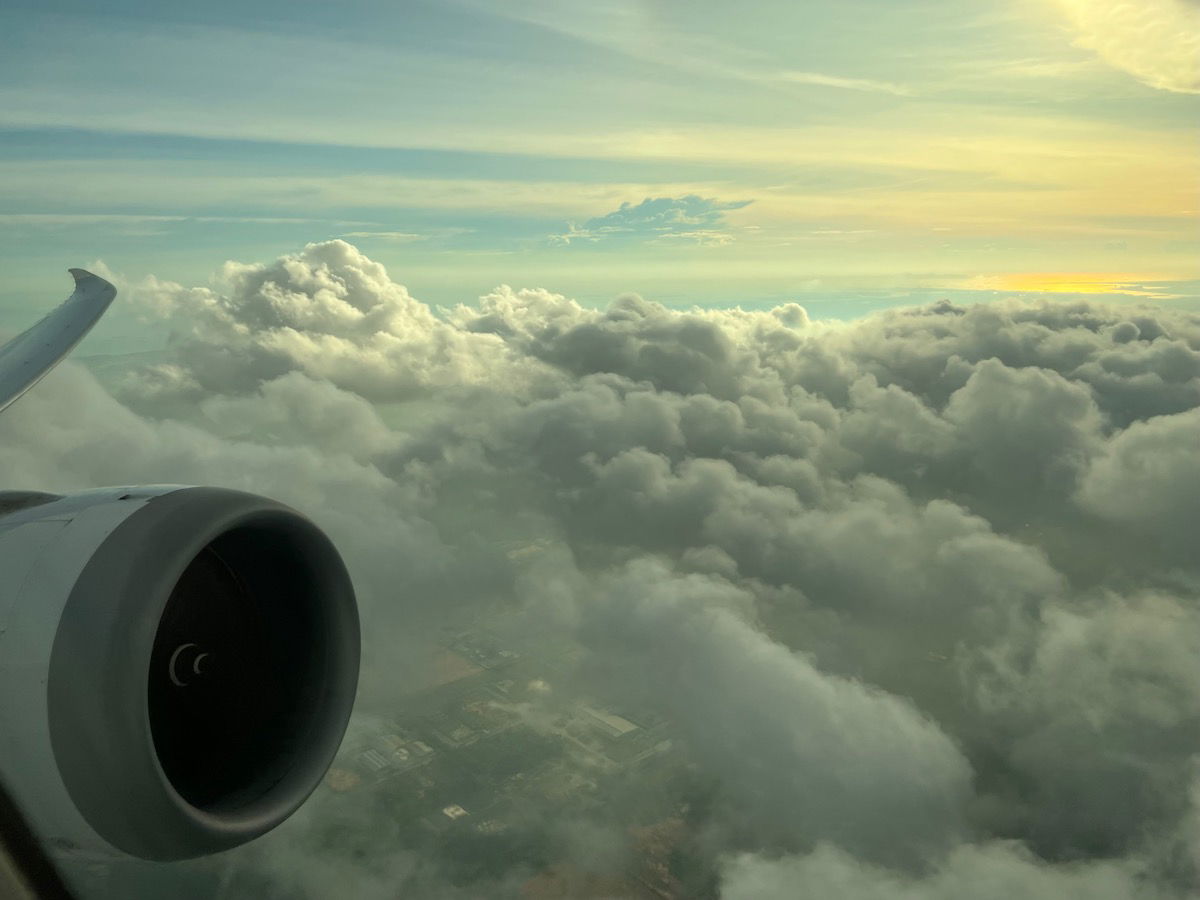
My take on Singapore Airlines’ policy change
Obviously Singapore Airlines is dealing with a tragic situation. While severe turbulence happens with some frequency, this is one of the worst incidents we’ve seen in a long time, given the fatality, as well as several people being in critical condition.
It’s logical enough that Singapore Airlines will err on the side of caution for some time, and institute policies that fall in the “better safe than sorry” category. The way I view it, there are a few reasons this probably doesn’t make sense in the long run, or on a larger scale:
- Pilots take wildly different approaches to managing the seatbelt sign, with some turning it on with just a single small bump, and others leaving it off even with some significant chop
- I can appreciate pilots turning on the seatbelt sign as a precaution, though there are lots of situations where passengers should be seated, but where flight attendants would probably be fine; after all, there’s a reason policies for passengers and crews have historically differed
- The added challenge is that suspending service is no easy task; it often requires transporting heavy carts back to the galley, which can be quite far away
I have to imagine that on some of Singapore Airlines’ shorter flights, this could lead to situations where the airline simply can’t fully perform the service. I’ve had lots of two-hour flights in Southeast Asia where the seatbelt sign was on for most of the flight. I’m curious to see how this policy evolves.

Bottom line
Following a severe turbulence tragedy, Singapore Airlines is updating its inflight service protocols. Effective immediately, all inflight service will be suspended whenever the seatbelt sign is on, as crews will have to buckle in. I don’t blame Singapore Airlines for being cautious for the time being, though I also imagine that eventually matters will normalize.
What do you make of this Singapore Airlines service update?
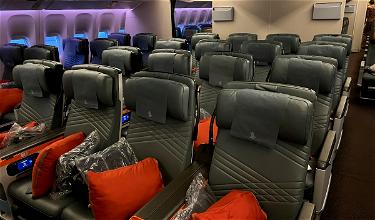

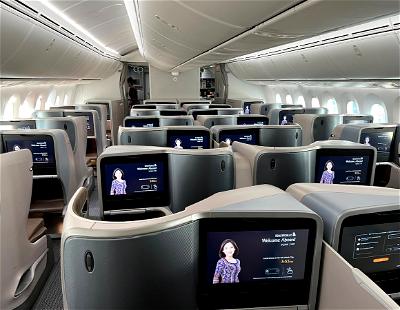
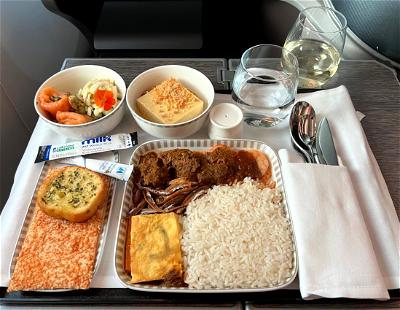
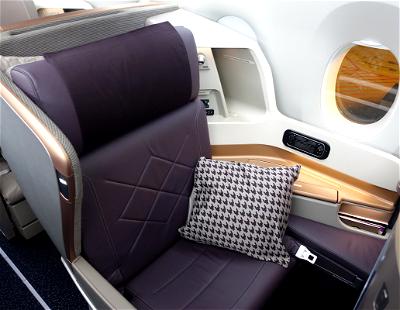
No surprise. And generally speaking US airlines are more conservative compared to European and Asian airlines regarding the seatbelt sign
Seriously Singapore doesn’t need to be lectured by bunch of westerners.
Their way of doing things have proven to be right.
In the 70s people were up and arms when Singapore ENFORCE petty crimes like littering, spitting and not flushing toilets, in the 80s on freedom of the press and in the 90s with graffiti and more recently in the 2000s with their strict drug policy and surveillance. Guess what? No other countries...
Seriously Singapore doesn’t need to be lectured by bunch of westerners.
Their way of doing things have proven to be right.
In the 70s people were up and arms when Singapore ENFORCE petty crimes like littering, spitting and not flushing toilets, in the 80s on freedom of the press and in the 90s with graffiti and more recently in the 2000s with their strict drug policy and surveillance. Guess what? No other countries especially in the western world have dealt with any of them. East asia came close but still on the learning curve.
Meanwhile, litter is rampant in inner city America. Graffiti is on trains used in daily service in europe and let’s not talk about drugs.
Singapore and SQ, you do you. Don’t listen to these so called experts.
I've flown on Air Canada and Delta since this happened and on all my flights, the pilots were noticeably more conservative about sitting the flight attendants than usual. Everyone is clearly a bit disturbed by the Singapore Airlines incident.
@Lucky - The passenger dies of a heart attack. Please don't add to the false narrative that he died because of turbulence.
This is a way overreaction. Best to avoid SIN air for a bit.
SQ 22 SIN - EWR
23 May
Cabin crew will make many announcements during the flight. Be prepared.
Every time the seat belt sign comes on.
Pax rest time is reduced, so is cabin crew rest time.
The crew were stuck to their seats for a good 20 min. While they were switching and going for break.
Meal services are longer, and before arrival, to allows for toilet use,...
SQ 22 SIN - EWR
23 May
Cabin crew will make many announcements during the flight. Be prepared.
Every time the seat belt sign comes on.
Pax rest time is reduced, so is cabin crew rest time.
The crew were stuck to their seats for a good 20 min. While they were switching and going for break.
Meal services are longer, and before arrival, to allows for toilet use, meal service is cut short and starts more than 2 hours before.
If turbulence persists, every thing is suspended. So be prepared, piss early and eat while u can.
No Lucky.
Meal & drinks carts are parked at the middle lavs or the walkway while the crew are seated. They resume service when the seat belt sign is turned off.
The crew do not push the carts to the aft galley.
No one is saying this is a permanent change of policy. I understand that emotions would be running high and SQ demonstrating that they are taking measures to avoid this happening again.
Rapid change of policies after an event are not uncommon.
Does anyone remember that awful Germanwings crash in 2015? The co-pilot who was suffering mental health issues locked the captain out of the flight deck and then deliberately flew the plane into...
No one is saying this is a permanent change of policy. I understand that emotions would be running high and SQ demonstrating that they are taking measures to avoid this happening again.
Rapid change of policies after an event are not uncommon.
Does anyone remember that awful Germanwings crash in 2015? The co-pilot who was suffering mental health issues locked the captain out of the flight deck and then deliberately flew the plane into a mountain killing everyone on board.
Overnight, nearly all european airlines changed their 'pilots leaving the cockpit' policy. At my airline, pilots were discouraged from leaving the cockpit at all during short haul flights. If they did need to leave for a loo break etc one of the cabin crew had to enter the cockpit and remain until the other pilot returned. Which obviously had an impact on the cabin service.
Within a few months and after the emotions had died down and assessments made things reverted back to normal.
I imagine SQ will be monitoring passenger and crew feedback on this newly introduced protocol and tweak as necessary.
Nowhere in this post does it state how many crew members vs passengers were injured. Go to any news source you trust. Almost all of the dozens injured were passengers. If all of the injuries were to people not wearing seat belts, it seems that the focus needs to be on passenger compliance.
It reminds me of some of the policies adopted by airlines following 9/11. Most of them (e.g. no metal cutlery) were abandoned gradually after the cockpit doors were fortified - which was the real solution to that particular scenario - but some of which incredibly still linger, like the sheer curtains installed by US airlines, which IMHO on many flights seriously affects customer experience in business and first with a lack of privacy, light and...
It reminds me of some of the policies adopted by airlines following 9/11. Most of them (e.g. no metal cutlery) were abandoned gradually after the cockpit doors were fortified - which was the real solution to that particular scenario - but some of which incredibly still linger, like the sheer curtains installed by US airlines, which IMHO on many flights seriously affects customer experience in business and first with a lack of privacy, light and noise pollution, etc. (I always wondered if the FAA actually required that "safety feature").
The reality of the turbulence situation is that the only guarantee that no one will ever get hurt in turbulence is to buckle up the entire flight, including cabin crew. Everything else is a judgment call, from the triggers to turning the seatbelt sign on and off to the way it is applied to crew and enforced on passengers. If airlines (perhaps pressured by a panicky public or FA unions) abandon judgment and adopt extreme saftyism, that will be a very sad day indeed for aviation. Hello cold, one-tray, soft-plated meals in international business class, served before departure!
Really curious to see how SIA handles this situation going forward, given the inherent conflict between their nanny-state home base and service-focused brand.
When seatbelt sign is on then it should be followed by passengers and crew equally. Why put crew in danger
I think that doesn't make any sense at all. The event a few days ago couldn't have been prevented with the new policy. Clear Air Turbulence occur unexpectedly and almost always cause for such tragic cases. When the aircraft will enter an area with "normal" turbulences, that's known before and will be decided with just seatbelts on or a "cabin crew be seated". I can't see any point in having the crew seated during usual light turbulences..
The seatbelt sign can be put on as a precaution for predicted or possible turbulence, which may not eventuate by good luck, so everyone goes "why wasn't the seat belt sign turned off?"
Apparently the 2nd meal will be served mid-flight instead of the last 2hrs because the weather approaching Singapore can be rough. mmhh
This is going to be like the US now, where crews decide not to do any service at all for the whole flight, because they need to be seated "for safety."
AA VP of Marketing: “we are following in the steps of world class airlines as we are one ourselves!”
Pilots and FA unions: ditto!
Actually, I am glad that the crew will have to abide by the sign as well. It makes sense. I have been in many flights when the sign was on for way too long (valid only for passengers, while the crew was doing all sorts of things), that the passengers got quite frustrated.
So, SQ, a good decision. Am just in a process of booking next flight with them.
The policy doesn't make any sense. Turbulence is not all the same - obviously some is worse than others. You can see that by the pilots' different responses to it: it's either "turn seat belt sign on", or do that plus "ask flight attendants to be seated". It seems to me that the first kind of turbulence is the sort where your average passenger might stumble and fall down and bump themselves whereas a trained...
The policy doesn't make any sense. Turbulence is not all the same - obviously some is worse than others. You can see that by the pilots' different responses to it: it's either "turn seat belt sign on", or do that plus "ask flight attendants to be seated". It seems to me that the first kind of turbulence is the sort where your average passenger might stumble and fall down and bump themselves whereas a trained flight attendant (who knows how and where to hold on) will have no problem. Making FAs sit down during the first kind isn't really going to do much to prevent the injury rate.
...*reduce* the injury rate.
And who can predict that a "weak" turbulence does not change into a more serious one?
There is no guarantee that a weak turbulence won`t change into something worse.
There is also no guarantee a sudden severe turbulence will not come out of the blue. So let's just strap on for the entire flight, shall we?
No- you are wrong. Safety is the same for passengers and crew. Seat belt sign on A everybody straps in. Period. Why do you think it is safer for crew to walk about but not passengers when the sign is on? That’s a shocking statement. We can all wait for our drink refill and another piece of garlic bread.
Because crew are/ought to be trained on how to handle turbulence and should be physically fit for work (able to stand for long periods of time and handle heavy items like luggage). Passengers come in all shapes and sizes; little kids, physical disabilities, pregnant, elderly, past experience standing on flights, etc. If you consider all the potential fragile passengers on board, then one can argue all the way to the point that the seatbelt sign...
Because crew are/ought to be trained on how to handle turbulence and should be physically fit for work (able to stand for long periods of time and handle heavy items like luggage). Passengers come in all shapes and sizes; little kids, physical disabilities, pregnant, elderly, past experience standing on flights, etc. If you consider all the potential fragile passengers on board, then one can argue all the way to the point that the seatbelt sign should always be on in case of unexpected turbulence from no turbulence at all. Then no one is getting their drinks or garlic bread unless the plane is on the ground and safely parked at the gate.
Haha! Are you kidding me? Do you ask crew to lift heavy bags for you? You must be a treat - try that in the US and see how far it gets you. Your post and that of the author of this article is misinformed. Seat belt sign on - EVERYBODY straps in. You can have your garlic bread and fish critique AFTER the sign is off. Those are the rules pal.
Agreed, Hanson. If the crew have to strap in the moment the light is activated, does that mean nobody does compliance checks in the cabin to ensure all the pax are restrained?
I've been on several flights, US carriers included, where the FAs have continued service while the pax were belted in due to turbulence, until a message from the flight deck requested "can the cabin crew please be seated" when it was obvious that the turbulence was getting worse.
This is what led to the injuries on the SQ flight. Qantas gets this right and many US airline crew members do as well. Lights on, buckle up. Nobody is immune to turbulence related injuries. To expect this of the cabin crew is callous, irresponsible and frankly, reprehensible. Do unto others … you get the drift.
@Pete
Excellent point about what would happen if cabin crew had to strap in immediately.
Indeed, is this what happened here?
"As of 24 May, 2 of the 18 crew members and 44 of the 211 passengers who were onboard the flight were still in hospital"
If all crew were standing one would have expected them to suffer more.
Other explanation I can think of is that the back of the 'plane, with fewer cabin crew, might have whipped more?
C'MON PEOPLE USE SOME COMMON SENSE. I TOTALLY COMMEND SIA FOR TAKING THIS ACTION. I WAS A FLIGHT ATTENDANT BACK IN THE DAY. FLYING IS SERIOUS BUSINESS WHETHER IT HAPPENS ONCE IN A BLUE MOON OR REGULARLY. PEOPLE DIE . THIS IS NOT GOING OUT TO YOUR BACK YARD AND HAVING A BARBECUE. GET REAL
Why are you yelling at us? There is no need to type in all caps.
NOT YELLING AT YOU. EVEN THOOUGH FLYING AS BECOME SAFER AND SAFER IT IS STILL DANGEROUS AND DEADLY.
I don't think he's yelling. He just doesn't understand the concept of lower/upper case because his parents are obviously brother and sister.
Overreaction and will significantly devalue SIA given the A350 isn’t all that comfortable but service made up for it. United it is for the near future to SIN.
This is coming and at least on AA in many ways already here. This means on shorter flights there will be no service in First and possibly even no meal service when a flight is on and off bumpy.
You wonder why we have so many of these incidents then you look at the health of the population in general and you know why. If I get up and there's unexpected bumps I can...
This is coming and at least on AA in many ways already here. This means on shorter flights there will be no service in First and possibly even no meal service when a flight is on and off bumpy.
You wonder why we have so many of these incidents then you look at the health of the population in general and you know why. If I get up and there's unexpected bumps I can steer myself back to a seat but when I look at a morbidly obese person with little mobility that person is going to become a huge flying missile.
You have obviously not experienced serious turbulence. I have. Any concept you have of making your way to your seat is moot, just imaginary.
Well in fact I have and my common sense would tell me to stay seated. But severe turbulence rarely comes out of the blue to the point you'd go flying. It's serious enough to get back to your seat but to the point I could without flying mid air. But 400 pound fatty decides even though the plane is shaking they have to use the lav and that's the problem.
Qantas has always had this policy.
Crew are not somehow immune to turbulence so it’s always perplexed me when crew are roaming around with the seatbelt sign on. Do they have some invisible protective force field surrounding them?
At QANTAS when the seatbelt sign goes on, it is for EVERYONE. The crew suspend service and strap themselves in, just like the passengers.
Crews have explicit training for operating during turbulence. They're also not going to sue the airline if they lose their balance.
As crew I can say this is incorrect on both points.
1) what training could be provided on dealing with turbulence apart from ‘hold on and hope you don’t hit the ceiling’? I am really interested to know.
2) Dunno about the USA but in Europe an employee absolutely can sue their employer if they are injured at work.
Maintaining multiple points of contact, staying lower to the floor, etc. Largely common sense, but things regular passengers may not think about that can make a difference. Not to mention experience and info from the pilot. The claim that FAs are equally vulnerable to turbulence just doesn't hold water, sorry.
Regarding lawsuits, not saying it can't happen, just saying it's far less likely, as it would require an injury. Passengers are a litigious bunch and...
Maintaining multiple points of contact, staying lower to the floor, etc. Largely common sense, but things regular passengers may not think about that can make a difference. Not to mention experience and info from the pilot. The claim that FAs are equally vulnerable to turbulence just doesn't hold water, sorry.
Regarding lawsuits, not saying it can't happen, just saying it's far less likely, as it would require an injury. Passengers are a litigious bunch and will sue over any little frivolous thing. If the seatbelt sign is on, that provides a lot of legal cover for the airline.
"The claim that FAs are equally vulnerable to turbulence just doesn't hold water, sorry."
Then perhaps read the news story today of the Qatar Airways flight that experienced turbulence resulting in twelve people hospitalised - six of them cabin crew. I would say that demonstrates that crew are not just equally vulnerable but in fact more likely to be affected.
This seems like the usual corporate reflex to overreact following a negative incident. Something we've seen before. The seat belt sign is on for many reasons; usually when there's not much to fear - which is why compliance is, and always has been, an issue. That said, when you make sweeping edicts like this, they become very hard to live with. It's excessive and I think that SQ will figure that out fairly quickly.
...This seems like the usual corporate reflex to overreact following a negative incident. Something we've seen before. The seat belt sign is on for many reasons; usually when there's not much to fear - which is why compliance is, and always has been, an issue. That said, when you make sweeping edicts like this, they become very hard to live with. It's excessive and I think that SQ will figure that out fairly quickly.
This was a freak event and even this new rule wouldn't have prevented the turbulence from throwing everyone and everything around. It came with little warning and that's not something that you can avoid with rules from the top floor of corporate.
Just saying, this would prevent carts and crew being thrown around as projectiles. This is not a total solution but every bit helps.
I flew SIA the day after the incident (ICN-SIN-DAC) and they were massively more conservative with the seat belt sign, it came on with the smallest bump and everyone (crew included) was seated.
For the flight from SIN to DAC while flying over Myanmar (where the incident took place the day prior) they had the seat belt sign on the whole time even through it was completely smooth.
It did turn into a...
I flew SIA the day after the incident (ICN-SIN-DAC) and they were massively more conservative with the seat belt sign, it came on with the smallest bump and everyone (crew included) was seated.
For the flight from SIN to DAC while flying over Myanmar (where the incident took place the day prior) they had the seat belt sign on the whole time even through it was completely smooth.
It did turn into a situation where passengers ignored it because it had been on for 40 mins with none to very minimal turbulence.
Shouldn't those actions considered to be more liberal.
And that's the problem with overusing the seatbelt sign. People will start ignoring it and that's worse than using the seatbelt sign appropriately, in which case people will respect it.
You need a tragedy to legitimately implement draconian policies and get away with it.
Just look at the PATRIOT act.
SQ will go cheap on inflight services due to seatbelt signs.
No one would complain when they devilishly play the victim card.
They went cheap after COVID. Have you had the meals in a box in economy class? Embarrassing!
Come on, SQ is one of the best airlines out there, if I fly them and there is no service I will not fly them again. They will do this now just so they are doing something and then go with recommendations after the inquiry.
Typical knee jerk reaction. "We have to pretend we do something that matters. So let's take actions that we have not thought through or planned out"
I was on a long-haul Turkish Airlines flight (IST-YUL) about a day after the Singapore Airlines flight's diversion, and it was pretty clear that pilots had since been instructed to have a hair trigger for the seatbelts sign during potential or actual turbulence. FAs were also *way* more meticulous than normal in going through the cabin and making sure people were buckled in.
Curious how this will work in practice, especially when the meal has been served and people are eating. If sudden turbulence was to appear, food and plates will still be all over the place
Flying food in the cabin probably won’t lead people to ending up in intensive care with injuries. Flying people in the cabin will.
Another excuse to cut cost and use plastic everything, smaller portions, and possibly no more hot meals on short haul flight.
In the name of safety.
And the new rule wouldn't have prevented any of it.
+1
Yes, but I was mostly thinking of plates, glasses, and cutlery flying around, especially knives...
@E39
The knives are not sharp kitchen knives.
Glasses not much of a risk on first bump, but if they break then the second bump would be more worrying.
Losing an eye is not impossible, but pretty remote.
I'm more worried about the carts - one of those landing on you could easily kill.
@Nikojas
That's my expectation too - hopefully we will be told how many of which severity of injuries in this case were from flying objects and how many from flying bodies hitting "fixed" objects.